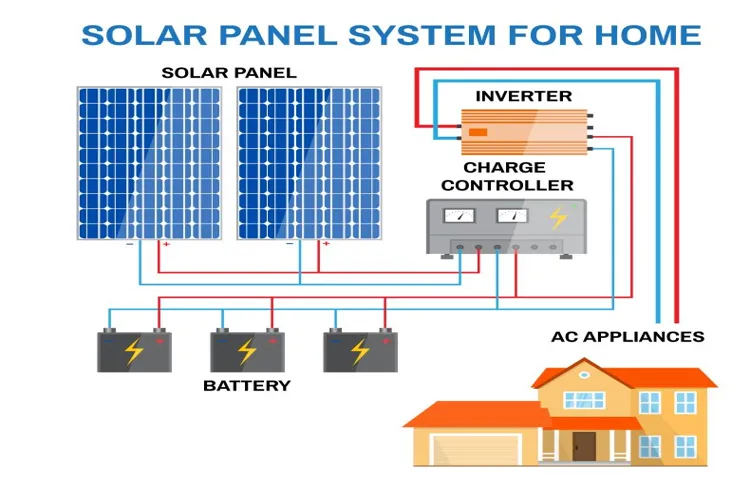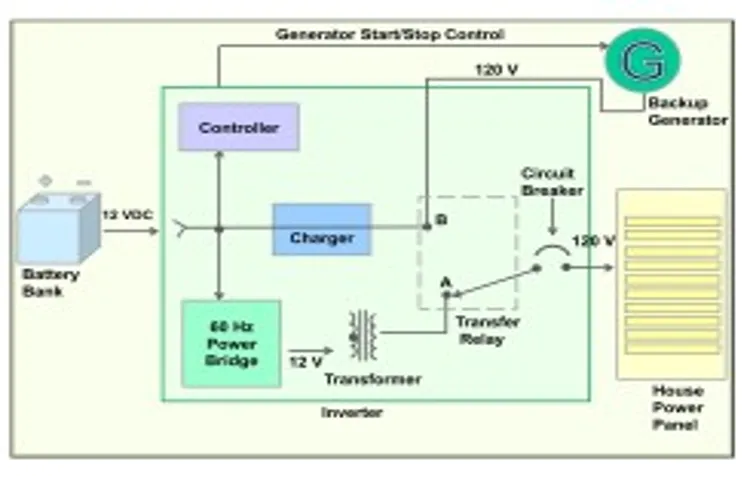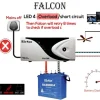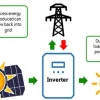Are you tired of constantly having to rely on a power source to charge your devices or run your appliances? Well, you’re in luck because power inverters are here to save the day! Whether you’re going on a road trip, camping in the wilderness, or facing a power outage, power inverters can provide you with the electricity you need. But what exactly is a power inverter? Imagine it as a translator or a bridge between your devices and the power source. It converts the direct current (DC) from your car’s battery or a solar panel into alternating current (AC), which is what most electronic devices and appliances use.
This means you can plug in your phone, laptop, or even a refrigerator into the power inverter and have them powered up! Power inverters come in various sizes and capacities, so you can choose the one that best suits your needs. Some inverters are designed for smaller devices like laptops and smartphones, while others can handle larger appliances like refrigerators or power tools. The power capacity of an inverter is usually measured in watts, so make sure to check the power requirements of your devices before purchasing one.
One of the great advantages of power inverters is their portability. You can easily store them in your car or bring them along on your camping trips. They are also equipped with safety features like overload protection and short circuit protection to ensure the safety of your devices and prevent any potential damage.
In conclusion, power inverters are an essential tool for anyone who needs a portable and reliable source of electricity. They provide a convenient and efficient solution for powering your devices on the go or during power outages. So, why rely on traditional power sources when you can harness the power of an inverter? Get ready to experience the freedom and convenience that comes with having your own portable power source!
Table of Contents
What is a Power Inverter?
Are you wondering how a power inverter works in your home? Well, let me break it down for you. A power inverter is a device that transforms DC (direct current) power from your car’s battery or a solar panel into AC (alternating current) power that can be used to run household appliances and electronics. It’s like a translator, converting the language of electricity so that your devices can understand and use it.
Just imagine speaking English and needing someone to translate your words into French for a conversation. That’s exactly what a power inverter does for your electrical devices. So, whether you’re on a road trip and need to charge your laptop or you’re using solar power to run your home, a power inverter is the handy tool that makes it all possible.
Definition of a power inverter
power inverter

Types of power inverters
Power inverters are electronic devices that convert direct current (DC) power into alternating current (AC) power. They are useful when you need to power AC devices, such as appliances, electronics, or tools, through a DC power source, like a car battery or a solar panel. There are different types of power inverters available on the market, each with its own unique features and capabilities.
One common type is the modified sine wave inverter, which is more affordable and suitable for basic household appliances. However, it may not be compatible with certain sensitive electronics or devices that require a pure sine wave power supply. On the other hand, pure sine wave inverters produce a high-quality AC power output that mimics the power from the grid.
These are more expensive but can safely power even the most sensitive electronics. Another type of power inverter is the grid-tie inverter, which is specifically designed to convert DC power from renewable energy sources, like solar panels or wind turbines, and feed it back into the electrical grid. This type of inverter is commonly used in residential and commercial applications to offset energy consumption and even earn credits or payments for surplus energy production.
How does a Power Inverter Work?
Have you ever wondered how a power inverter works in your home? Well, let me break it down for you. A power inverter is a device that converts direct current (DC) from your home’s battery or solar panels into alternating current (AC) that can be used to power your household appliances. It’s like a magic box that takes the energy stored in your battery or generated by your solar panels and transforms it into a form that can be used to run your TV, refrigerator, or any other electronic device you have.
Think of it as a translator that takes the language of your battery or solar panels (DC) and translates it into the language understood by your appliances (AC). So, the next time you’re enjoying a movie night at home, remember that it’s all thanks to the power inverter working its magic to bring electricity to your devices.
Overview of the working principle
power inverter
Basic components of a power inverter
power inverter, inverter work, basic components, electrical power, direct current (DC), alternating current (AC), conversion process. In simple terms, a power inverter is a device that converts direct current (DC) electrical power into alternating current (AC) power. This conversion process is essential because most of our electrical devices, such as laptops, TVs, and refrigerators, operate on AC power.
So, if you want to use these devices in a location without access to an AC power source, like during a camping trip, a power inverter can come to the rescue. Power inverters consist of several basic components that work together to produce AC power. The primary component is the DC input, which is often connected to a battery or a solar panel.
The inverter takes the DC power from the input and converts it into high-frequency AC power. This high-frequency AC power is then passed through a transformer, which steps up the voltage to the desired level. Finally, the output stage of the inverter filters and stabilizes the AC power, ensuring a steady supply to the connected devices.
To summarize, a power inverter is a device that allows you to convert DC power into AC power, enabling you to use electrical devices that require AC power in locations without access to an AC power source. It does this by utilizing basic components like the DC input, inverter circuit, transformer, and output stage to convert and stabilize the electrical power. Whether you’re camping, traveling, or experiencing a power outage, a power inverter can be a lifesaver in keeping your devices running smoothly.
Steps of the conversion process
power inverter, conversion process, how does a power inverter work
Explanation of AC and DC electricity
power inverter, AC electricity, DC electricity, electricity conversion, battery power, electrical devices, portable power source, electrical grid, power outage, solar panels, car battery. Power inverters are essential devices that allow us to convert DC (Direct Current) electricity from a battery power source into AC (Alternating Current) electricity. This is especially useful when we need to power electrical devices that require AC electricity, like laptops, TVs, and kitchen appliances, using a portable power source such as a car battery or solar panels.
So, how does a power inverter actually work? Think of AC electricity as a power grid, where the current periodically changes direction. This is different from DC electricity, which flows in one direction constantly, like a river flowing downstream. Power inverters use a clever circuitry system to convert DC electricity into AC electricity.
Here’s how it works: when you connect a battery or any other DC power source to a power inverter, it first converts the DC electricity into high-frequency AC electricity. This high-frequency AC is then passed through a transformer which adjusts the voltage to the desired levels. After that, the AC electricity is converted into a sinusoidal waveform, similar to the shape of the AC electricity provided by the electrical grid.
Finally, the power inverter outputs this AC electricity, allowing you to power your devices. This process of converting DC electricity to AC electricity is incredibly valuable, especially in situations like power outages or when we need to access electrical devices in remote locations. Power inverters allow us to harness the power of battery storage and renewable energy sources, making electricity accessible wherever we need it.
Next time you’re using a power inverter to charge your laptop on a camping trip or power your TV during a blackout, remember the magic happening behind the scenes. Power inverters bring the worlds of AC and DC electricity together, providing us with a versatile and powerful tool for our electrical needs.
Applications of Power Inverters
Have you ever wondered how power inverters work in a home? Well, let me break it down for you. A power inverter is a device that converts direct current (DC) from a battery or solar panel into alternating current (AC) that can be used to power appliances and devices in your home. The process is quite fascinating.
When you plug an appliance into an outlet, it expects to receive AC power. However, batteries and solar panels produce DC power. This is where the power inverter comes in.
It takes the DC power from the battery or solar panel and converts it into AC power, allowing you to use your appliances as usual. It’s like having a language translator for electricity! So, the next time you use your toaster or charge your phone with a battery, remember that it’s all thanks to the magic of power inverters.
Powering household appliances
power inverters, household appliances, applications of power inverters, powering household appliances, inverter technology, energy conversion, portable inverters, backup power supply Power inverters are a game-changer when it comes to powering household appliances. These devices have revolutionized the way we use electrical appliances in our homes. Inverter technology allows for efficient energy conversion, making it possible to use portable inverters to power appliances even when there is no direct access to electricity.
The applications of power inverters are incredibly versatile. One of the most popular uses is to provide a backup power supply during power outages. Instead of being left in the dark, with no means to keep food refrigerated or stay connected, a power inverter can be used to power essential appliances such as refrigerators, lights, fans, and even charge electronic devices.
This can provide much-needed comfort and convenience during unexpected electricity blackouts. Power inverters also find their place in outdoor activities such as camping, boating, or RV trips. Portable inverters make it possible to power appliances like laptops, coolers, and even small appliances like coffee makers or toasters while enjoying the great outdoors.
This allows for a more comfortable and enjoyable experience, even in remote locations. Furthermore, power inverters are also commonly used in areas where grid power is not available or unreliable. These inverters can be used to power appliances like televisions, refrigerators, and fans in areas where electricity access is limited.
This makes it possible for people living in remote or off-grid locations to enjoy the benefits of modern appliances and technology. In conclusion, power inverters have various applications when it comes to powering household appliances. Whether it is providing a backup power supply during outages, enabling outdoor activities, or powering appliances in off-grid locations, inverters have become an essential part of our lives.
With their efficient energy conversion and portable nature, power inverters have made it possible to enjoy the comfort and convenience of electrical appliances in a variety of situations.
Powering electronic devices in cars and boats
power inverter, electronic devices, cars, boats Power inverters are essential devices for powering electronic devices in cars and boats. With the increasing number of gadgets and appliances that we rely on in our daily lives, it is crucial to have a reliable source of power when traveling. Whether you are going on a road trip in your car or sailing on your boat, power inverters allow you to charge your phone, laptop, or other electronic devices without draining your battery.
In cars, power inverters are particularly handy for long journeys. Imagine being able to watch movies on your tablet or play video games on your console without worrying about running out of battery. With a power inverter, you can easily plug in your devices and keep them charged throughout your trip.
This not only provides entertainment for passengers but also ensures that you have access to navigation apps or emergency services at all times. Boats are also increasingly equipped with electronic devices, such as radios, navigation systems, and fish finders. These devices require a constant source of power to work efficiently.
Power inverters convert the DC power from the boat’s battery into AC power, allowing you to use your devices for an extended period. Whether you are fishing, cruising, or enjoying a day out on the water, having a power inverter on your boat ensures that you stay connected and can rely on your electronic equipment. In conclusion, power inverters are incredibly versatile and valuable tools for powering electronic devices in cars and boats.
They provide a reliable source of power, allowing you to charge and use your devices without draining your battery. So, whether you are planning a long road trip or a day out on the water, investing in a power inverter is a smart choice to stay connected and make the most out of your electronic devices.
Backup power during power outages
backup power during power outages, power inverters, applications of power inverters Have you ever been in the middle of an important task or enjoying your favorite movie, only to have the power suddenly go out? It can be frustrating to be left in the dark and without access to electricity, especially if you rely on it for various appliances and devices. This is where power inverters come in handy. Power inverters are devices that convert DC power from a battery into AC power, allowing you to use your electronic devices even when the power is out.
They are particularly useful during power outages as they provide backup power and maintain electricity supply to essential appliances such as refrigerators, lights, laptops, and charging stations. With a power inverter, you can continue to work, stay connected, and keep your household running smoothly, even when the power grid fails. So, whether it’s for emergency situations or just to have peace of mind, power inverters are a must-have for anyone who wants to stay powered up during unexpected power outages.
Choosing the Right Power Inverter
Have you ever wondered how a power inverter works in your home? Well, let me break it down for you. A power inverter is a device that converts DC (direct current) power from a battery or a solar panel into AC (alternating current) power that can be used to run household appliances. It is basically like having a translator between two different languages.
When you plug in your phone charger or turn on a lamp, the AC power from the outlet is converted into DC power that your device can use. Similarly, a power inverter takes the DC power from a battery or solar panel and converts it into AC power that your appliances can use. This is especially useful if you live in an area with limited access to electricity or if you want to be more environmentally friendly by using solar power.
So the next time you plug in your phone or turn on a light, remember the power inverter that is working behind the scenes to make it all possible.
Determining power requirements
power inverter, power requirements, choosing, burstiness
Considering waveforms and efficiency
Choosing the right power inverter for your needs is essential to ensure efficiency and optimal performance. One important factor to consider is the waveform of the inverter. There are two common types of waveforms: modified sine wave and pure sine wave.
Modified sine wave inverters are more affordable but may not be suitable for certain applications. They produce a waveform that is not as smooth and can cause some appliances to produce a buzzing noise or have reduced performance. On the other hand, pure sine wave inverters produce a waveform that is identical to the power grid, making them compatible with all types of appliances.
They are more expensive but offer higher efficiency and better performance, especially for sensitive electronics and appliances. Efficiency is another crucial factor when choosing a power inverter. The efficiency of an inverter refers to the percentage of power that it can convert from DC (direct current) to AC (alternating current) without any loss.
Higher efficiency inverters can convert more power, resulting in less wasted energy and longer battery life. Additionally, they generate less heat, which can prolong the lifespan of the inverter itself. Considering both waveform and efficiency is vital when selecting the right power inverter for your needs.
If you primarily plan on using basic appliances or tools, a modified sine wave inverter may be sufficient. However, if you have sensitive electronics or appliances that require a consistent and smooth power supply, investing in a pure sine wave inverter is highly recommended. Additionally, opting for a more efficient inverter can provide long-term cost savings and improved performance.
So, take the time to research and compare different models to ensure you make the best choice for your power needs.
Safety considerations
power inverter, safety considerations, choosing the right power inverter In order to choose the right power inverter, it is crucial to consider safety factors. One important aspect to look at is the power rating of the inverter. Make sure to select an inverter that is capable of handling the electrical load you plan to connect to it.
Using an underpowered inverter can lead to overheating and potentially cause a fire. On the other hand, using an overpowered inverter can also be dangerous as it may overload your vehicle’s electrical system. Additionally, it is essential to pay attention to the input voltage range of the inverter.
The operating voltage of the inverter should match the electrical system of your vehicle to prevent any electrical malfunctions. Lastly, it is wise to invest in a power inverter that has built-in safety features such as overload protection and short circuit protection. These features can help prevent any accidents or damage to your equipment.
By considering these safety factors, you can choose the right power inverter that ensures both functionality and peace of mind.
Conclusion
In conclusion, a power inverter is like the magical translator between the world of direct current (DC) and alternating current (AC) in our homes. It takes the humble DC power from your car battery, solar panels, or other power sources and whispers sweet nothings to it, convincing it to transform into the energetic and lively AC power that our appliances and gadgets thrive on. Think of the power inverter as the ultimate swing dance partner, effortlessly leading the DC power in a dance routine that keeps the electricity flowing smoothly through our homes.
It flawlessly converts the DC power’s simple one-way steps into the AC power’s dynamic and ever-changing choreography. But the power inverter isn’t just a smooth talker, it’s a quick-thinker too. It constantly monitors the voltage and frequency of the AC power, making sure it matches the requirements of our devices.
It’s like the Sherlock Holmes of electricity, always detective-ing away to ensure the perfect power supply for our appliances. So, next time you turn on your trustworthy power inverter, take a moment to appreciate its suave and brilliant nature. It’s the unsung hero of our homes, quietly converting our power sources into the electricity that fuels our everyday lives.
And with its help, we can keep shining brighter than ever, even when the lights go out.
FAQs
What is a power inverter and how does it work in a home?
A power inverter is a device that converts DC (direct current) power from a battery or solar panel into AC (alternating current) power that can be used to power household appliances in a home. It works by using electronic circuitry to convert the DC power into the proper waveform and voltage required by the appliances.
Can a power inverter be used to power all appliances in a home?
Yes, a power inverter can be used to power most appliances in a home. However, it is important to consider the power requirements of the appliances and the capacity of the inverter. Some high-power appliances, such as air conditioners or heaters, may require a larger capacity inverter or multiple inverters to power them.
How long can a power inverter provide power to a home?
The duration of power provided by a power inverter depends on the capacity of the battery or power source connected to it. Generally, larger capacity batteries can provide power for a longer duration. It is important to calculate the power consumption of the appliances in order to estimate the runtime of the inverter.
Are power inverters safe to use in a home?
Power inverters are generally safe to use in a home if installed and used properly. It is important to follow the manufacturer’s instructions and safety guidelines. It is also recommended to have a qualified electrician install the inverter and ensure that it is properly grounded and protected against electrical faults.
Can a power inverter be used with a generator or solar panels?
Yes, a power inverter can be used with a generator or solar panels. In fact, power inverters are commonly used with solar panel systems to convert the DC power generated by the panels into AC power that can be used in homes. They can also be used with generators to convert the DC power output into AC power.
Is it possible to use multiple power inverters in a home?
Yes, it is possible to use multiple power inverters in a home. This can be useful if there are high power demands or if multiple power sources, such as solar panels or generators, are being used. However, it is important to properly size and configure the inverters to ensure they work together effectively.
Can a power inverter be used in a home without a battery?
Yes, a power inverter can be used in a home without a battery if a power source, such as a generator or solar panels, is connected directly to the inverter. In this case, the inverter functions as a converter, converting the DC power from the source into AC power that can be used in the home.



